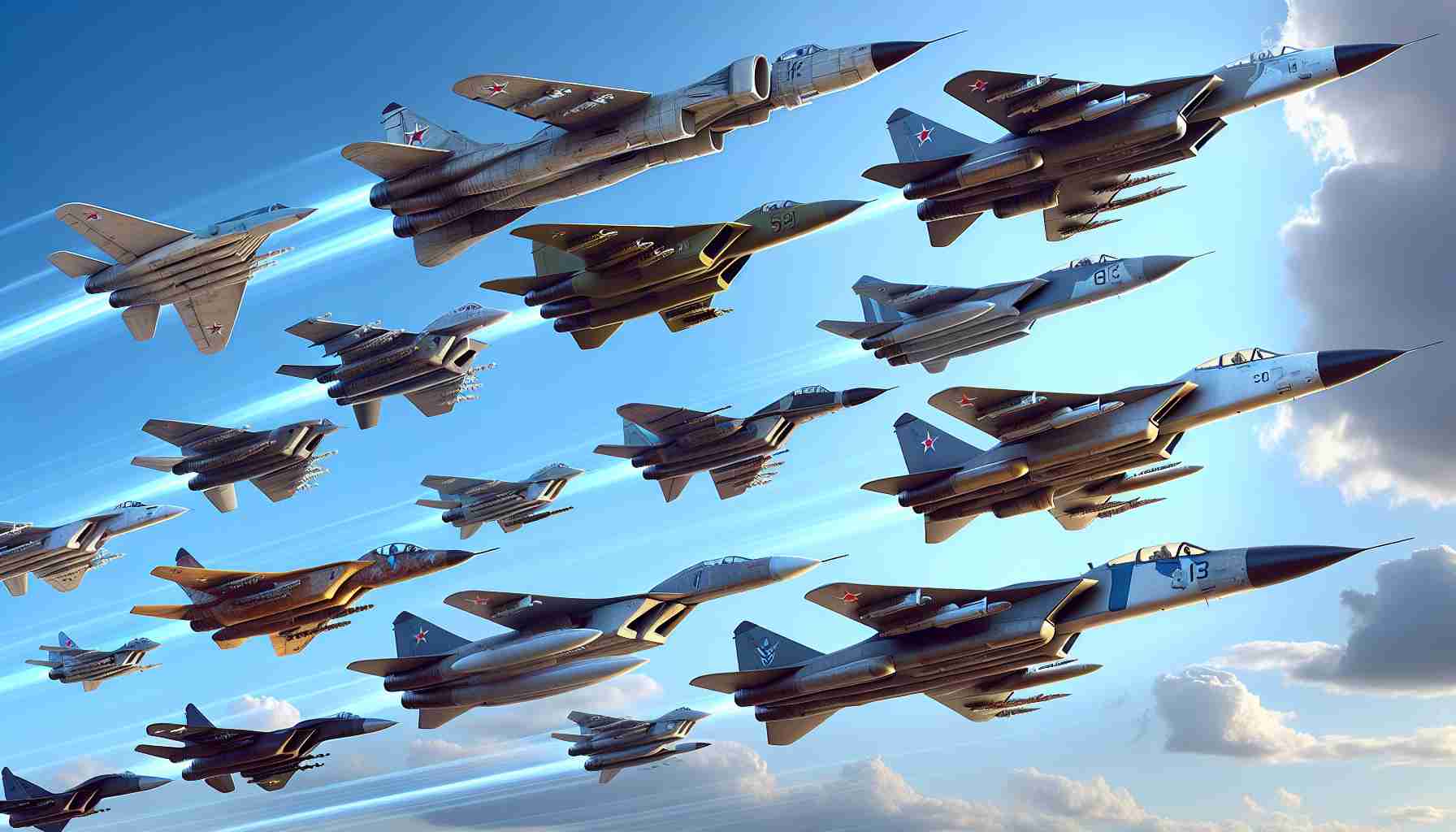The landscape of military aviation is continuously evolving, particularly with the emergence of advanced fighter jets that shape modern combat strategies. Among the most notable are the American F-35 Lightning II and the Russian Su-35 Flanker-E, each representing cutting-edge technology and unique operational capabilities.
The F-35 is classified as a fifth-generation multirole stealth fighter, designed to minimize detection by radar systems while incorporating advanced avionics and electronic warfare capabilities. Its design emphasizes stealth and information superiority, allowing it to excel in both air-to-air engagements and ground attack missions. The aircraft’s sophisticated sensor fusion technology provides pilots with unmatched situational awareness, enabling them to engage enemy forces with precision.
In stark contrast, the Su-35 is recognized as a fourth-plus generation fighter jet, renowned for its remarkable agility and thrust vectoring capabilities. While it does not feature stealth technology like the F-35, the Su-35 is highly effective in air combat, equipped with a powerful radar and missile system capable of targeting multiple threats simultaneously. Its operational reliability and endurance offer substantial competitive advantages in various combat scenarios.
Both fighter jets, while distinct in their design philosophies, illustrate the different strategic priorities of their respective nations. The F-35 focuses heavily on stealth and information dominance, whereas the Su-35 prioritizes maneuverability and firepower. As global military dynamics shift, the encounters between these two aircraft will likely influence future aerial combat strategies and geopolitical balances.
In light of these developments, enhancing knowledge of military aviation has become increasingly pertinent for enthusiasts, scholars, and professionals alike. Understanding the complexities of modern fighter jets serves as a gateway to appreciating their roles in contemporary warfare. Here are several methods to deepen your military aviation knowledge:
1. Leverage Online Resources: To broaden your understanding of military aviation, explore dedicated aviation and defense websites that offer a wealth of articles, analysis, and updates on various aircraft and military technology.
2. Utilize Simulation Software: Engaging in flight simulation software, such as Microsoft Flight Simulator or DCS World, can provide an immersive experience that helps users grasp the challenges and skills involved in flying advanced fighters like the F-35 and Su-35.
3. Attend Aviation Events or Museums: Visiting aviation museums or attending airshows enables enthusiasts to see military aircraft up close and appreciate their capabilities and historical contexts firsthand.
4. Follow Military Analysis Programs: Numerous online platforms and YouTube channels provide detailed military aviation analysis. These channels often compare different aircraft and discuss performance metrics, offering visual insights into the nuances of air combat operations.
5. Stay Updated on Defense Technologies: The military aviation landscape is always changing, so keeping abreast of the latest advancements in aircraft technology and air superiority strategies is crucial. Subscriptions to defense publications can provide valuable information in this regard.
Interesting Fact: The F-35 program involved contributions from numerous international partners during its development, which reflects its status as a truly global combat aircraft. Meanwhile, the Su-35 boasts an advanced ESA radar system that can track up to 30 targets simultaneously, showcasing its prowess in air combat scenarios.
By applying these strategies, you can develop a richer understanding of the vital roles played by fighter jets like the F-35 and Su-35. Keep your curiosity alive as you explore the fascinating realm of military aviation.
Unlocking the Skies: Tips, Life Hacks, and Facts About Military Aviation
The field of military aviation is a complex and captivating arena, where technology, strategy, and skill converge. Whether you are a staunch aviation enthusiast or someone who simply appreciates the significance of these advanced aircraft, there are numerous ways to enhance your understanding and experience of military aviation. Here are some valuable tips, life hacks, and intriguing facts that will enrich your knowledge and engagement with this dynamic topic.
1. Explore Virtual Reality Flight Experiences: Engage with virtual reality (VR) flight experiences for an immersive view of piloting military aircraft. VR simulations provide realistic environments where you can pilot jets like the F-35 or Su-35, helping you appreciate their complexities and operational dynamics.
2. Join Online Forums and Communities: Become a member of aviation forums and social media groups dedicated to military aviation. Platforms like Reddit and specialized aviation forums are great for exchanging ideas, asking questions, and keeping up with the latest news from fellow enthusiasts.
3. Documentaries and Historical Analysis: Watch documentaries on military aviation to gain insights into the development and deployment of iconic aircraft. These films often detail the historical context, technological advancements, and military strategies that shaped the aviation landscape.
4. Read Books by Aviation Experts: Invest time in reading books written by pilots, military historians, and aviation experts. Many authors provide in-depth analyses of specific aircraft, their roles in combat, and personal firsthand experiences, offering detailed perspectives that enrich your understanding.
5. Stay Informed Through Newsletters: Subscribe to aviation newsletters or blogs that focus on military advancements and aircraft reliability. These resources can provide real-time updates and meaningful commentary on emerging technologies and global aviation trends.
Useful Fact: Did you know the F-35 program is not just an American endeavor? Its development involved collaboration with international partners including the UK, Israel, and Australia, emphasizing its multi-national importance. In contrast, the Su-35 features vectoring thrust, allowing for exceptional maneuverability, which is vital in air combat situations.
6. Participate in Flight Training Programs: For those seriously interested in aviation, enrolling in a flight training program could be beneficial. Many programs offer insights into flying techniques and the physics of flight, which can provide further understanding of military jet operations.
7. Leverage Mobile Apps: There are several mobile applications designed for aviation buffs. These apps provide access to flight tracking, aviation news, and even augmented reality features for learning about aircraft in detail.
8. Network at Military Base Open Houses: Attend open houses or airshows at military bases where you can meet pilots and crew members, interact with various aircraft, and ask questions that provide you with practical insights.
By utilizing these strategies and exploring the fascinating world of military aviation, you can heighten your appreciation for the technological marvels that play critical roles in modern warfare.
As you embark on this journey, don’t forget to visit Air Force for the latest in military aviation news and developments. Keep your curiosity alive and continue to explore the awe-inspiring realm of military aircraft!

















